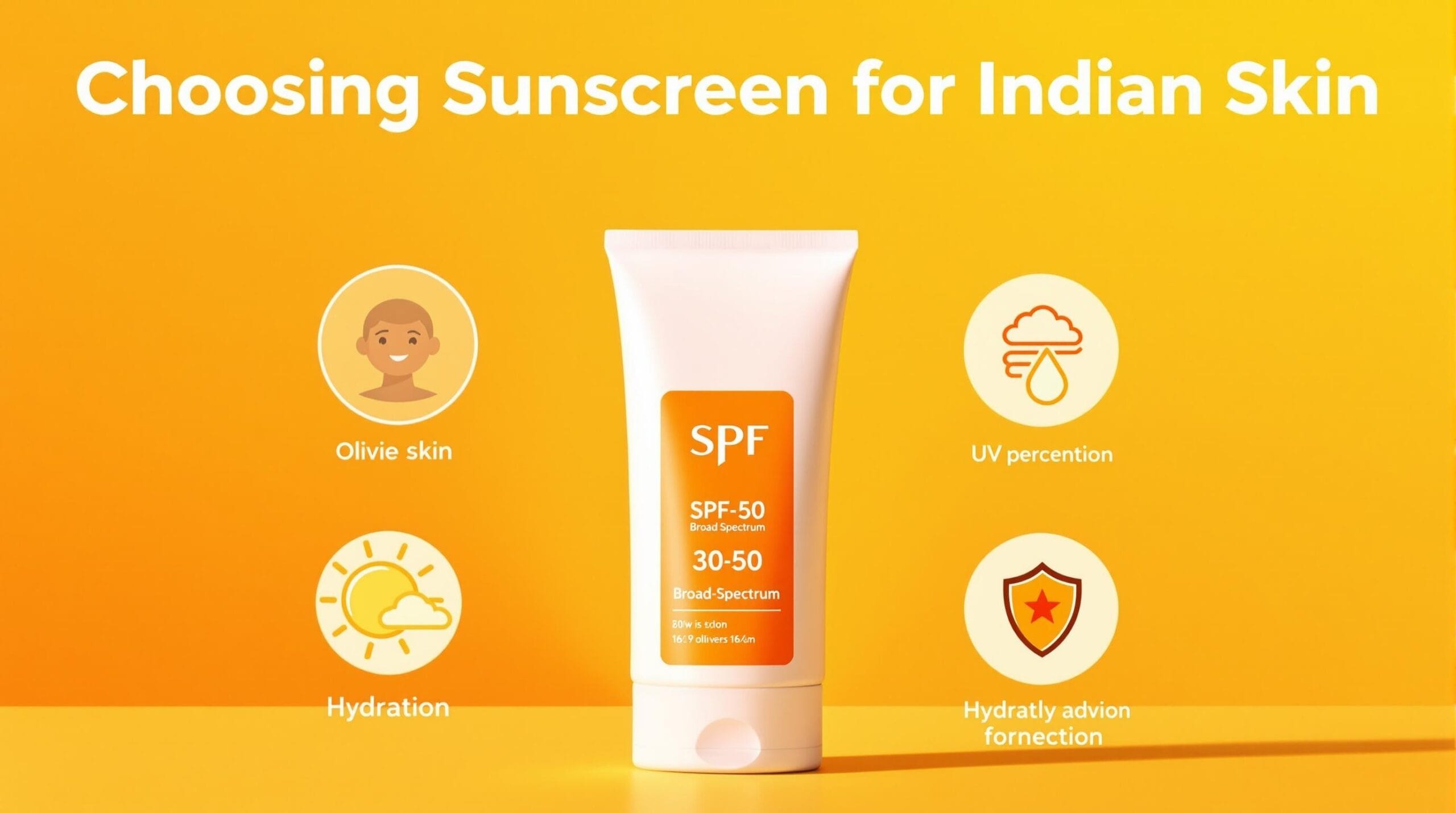
In India’s diverse climates, sunscreen becomes crucial for skin health. The high UV index across regions poses a significant risk to unprotected skin, increasing the likelihood of damage. Studies have shown that regular sunscreen use is vital in preventing skin issues and maintaining skin health over the years. Given this, understanding the need for sunscreen in your daily routine cannot be overstated.
Whether it’s a sunny day or overcast, harmful UV rays penetrate clouds, impacting your skin. A key statistic underscores this necessity: 80% of UV rays can penetrate clouds, underscoring the importance of daily sunscreen use.
Understanding Indian Skin Types: A Color Spectrum
Indian skin types vary widely, ranging from oily, dry, to combination skin. Oily skin is prevalent due to the climate, often requiring lightweight, gel-based sunscreens that minimize pore blockage. Conversely, dry skin types benefit from cream-based sunscreens that provide added moisture. Combination skin requires tailoring to balance the oily and dry areas effectively.
A quick reference table below illustrates different skin types and suitable sunscreen formulations:
| Skin Type | Recommended Sunscreen Type |
|---|---|
| Oily | Gel-based, Non-comedogenic |
| Dry | Cream-based, Moisturizing |
| Combination | Balanced formulation with both gel and cream properties |
Melanin Matters: The Role of Skin Tone
Melanin plays a vital role in determining sun protection needs. Higher melanin content provides some natural protection but does not eliminate the need for sunscreen. UV radiation affects all skin tones, causing potential long-term damage. Ensuring comprehensive protection means selecting a sunscreen that addresses your specific skin tone alongside your type.
The Basics: SPF and Broad-Spectrum Explained!
What is SPF and Why It’s Crucial?
SPF stands for Sun Protection Factor, measuring a sunscreen’s ability to protect against UVB rays, which cause sunburn. For Indian conditions, a broad-range SPF between 30 to 50 is typical for effective daily protection, offering a balanced shield without being excessive or insufficient.
Broad-Spectrum: More Than Just A Buzzword!
Broad-spectrum sunscreens offer protection against both UVA and UVB rays, essential for comprehensive skin safety. UVA rays penetrate deeper, contributing to aging and long-term skin damage. For Indian skin, broad-spectrum options are non-negotiable, ensuring balanced protection against diverse UV threats.
Formulations for Every Skin Woe: Pick Your Potion
Gel vs Cream: What’s Your Comfort Style?
Choosing between gel and cream formulas depends on personal comfort and skin type. Gel sunscreens are light, absorbing quickly, ideal for oily or humid conditions. Cream variants offer robust hydration, suited for dry climates, enhancing moisture retention alongside sun protection.
Look Out! Ingredients That Matter
Key sunscreen ingredients play crucial roles. Zinc Oxide and Titanium Dioxide provide strong physical barriers against UV rays. Chemical options like Octinoxate and Avobenzone offer effective absorption of rays. Check ingredient lists, avoiding irritants such as oxybenzone, which can provoke allergies.
Natural vs Chemical Sunscreens: The Showdown
Natural sunscreens utilize mineral ingredients like zinc oxide, gentle on sensitive skin but might leave a white cast. Chemical sunscreens absorb quickly and are suitable for deeper skin tones without residue. Consider sensitivity levels and overall skin health when choosing between these options.
How to Apply Sunscreen Like a Pro!
Timing is Everything!
Apply sunscreen at least 15 minutes before sun exposure, allowing time for absorption. If using makeup, apply sunscreen first, followed by a brief wait before applying other products to ensure optimal effectiveness and placement.
The Right Amount: How Much Is Enough?
For sufficient coverage, use a golf ball-sized amount for the body and a teaspoon-sized amount for the face alone. Reapply every two hours, particularly after swimming or heavy sweating, maintaining consistent protection.
Common Misconceptions: Busting Sunscreen Myths
Unpacking myths, such as “dark skin doesn’t need sunscreen” is essential. UV damage occurs across all skin tones, negating this misconception. Beliefs about not needing protection during cloudy days also prove false, as UV rays penetrate through clouds.
Real Talk: Top sunscreens for Indian Skin in 2023
Here are some of the top-rated sunscreens catering specifically to Indian skin types:
| Product | Features | Regular Price |
|---|---|---|
| Aqualogica Sunscreen SPF 50 | Glow+ Dewy | SPF 50, non-greasy, water-resistant | ₹403 |
| Aroma Magic Sunscreen – SPF 30 | SPF 30, broad-spectrum, matte finish | ₹160 |
| Lotus Organics+ Ultra Matte Tinted Face Sunscreen Cream, SPF 40 PA+++ | SPF 40, tinted for even tone, moisturizing | ₹495 |
Conclusion: Embrace the Sunshine—Protect Your Glow!
Choosing the right sunscreen is a cornerstone of caring for your skin amidst India’s diverse conditions. Prioritize it as a daily ritual for long-term healthy and protected skin, adapting to specific needs like lifestyle and location.
FAQ: Your Sunscreen Questions Answered
What SPF is best for daily use?
An SPF of 30 to 50 offers ample protection for most daily activities.
Does sunscreen expire?
Yes, typically after three years. Always check the expiry date before use.
Can I use the same sunscreen on my face and body?
Yes, but facial sunscreens generally provide a lighter, non-comedogenic formula for face-specific needs.
Unlock Flawless Skin: The Ultimate Guide to When You MUST Use Sunscreen on Your Face! >>>
Discover the Shocking Truth About Tinted Sunscreen That Everyone Needs to Know! >>>
Is It Safe to Slather Your Face Sunscreen All Over Your Body? The Shocking Truth Revealed! >>>







